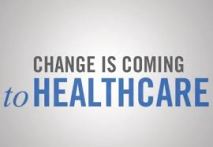With the ONC’s recent release of their 10-year interoperability vision, it might seem like the industry is starting to make things easier for clinicians. In reality, 2015 is starting off to be one of the worst times ever to be a physician. Interoperability is a critical issue to support a transition from fee-for-service to value-based care. Physicians will eventually be reimbursed around their ability to impact clinical outcomes, so the need for clinically relevant information at their fingertips is mission critical.
Tag Archives: patients
Healthcare in South Africa – Two Systems, Common Challenges
When it comes to mHealth, most industrialised nations such as the U.S. and Europe have a head start. Money for healthcare technology investments is available, the infrastructure is in place, and most of the population is already engaged in the healthcare system.
As a country of about 52 million people, South Africa shares many characteristics with its larger brethren. There is a mix of public and private healthcare providers and health insurance plans, physician shortages in key areas, and South Africa is beset by many of the same chronic diseases that industrialised countries face (cardiovascular and obesity-related diseases, diabetes, etc.).
Today’s Pressure Breeds Tomorrow’s Solutions
It is no secret that health systems are under intense pressure to deliver better outcomes at lower costs, and standardizing acute care workflow will only carry providers so far. Truly moving the needle on cost and outcomes will require a fundamental redesign in care delivery; otherwise, health systems may well find themselves left out. Care keeps shifting to environments in which hospitals have less influence: what was once critical care can now be managed in an in-patient unit; what was once in the hospital is now in an office; what was once in the office is now at home.
Creating a Friendly Environment for Adoption of Clinical Decision Support
In recent years, our ability to stream large amounts of data in real-time has improved dramatically. This enhancement can transform how clinicians offer care by sourcing unprecedented opportunities for clinical decision support. However, the capability to process, store, and display data in and of itself does not transform care. Rather, it is how the clinicians adopt and apply decision support that will make all the difference to patients. However, the current environment must be altered to create a clinical decision support-friendly climate.
Embracing Security Challenges
 Over the past year, the perception of mobile technology in healthcare has changed dramatically. mHealth is now being recognized as a tool that can help address the challenges our healthcare system is facing, including a shortage of caregivers, an influx of newly insured patients, decreased reimbursements and readmission penalties. Historically, there have always been barriers that kept hospitals from making the leap to mobility – lack of infrastructure, costs, or the fear of security breaches, among other reasons. Yet as mobile technology becomes deeply ingrained in our day-to-day work and social lives, healthcare is following suit and migrating toward mobility as a component of care delivery.
Over the past year, the perception of mobile technology in healthcare has changed dramatically. mHealth is now being recognized as a tool that can help address the challenges our healthcare system is facing, including a shortage of caregivers, an influx of newly insured patients, decreased reimbursements and readmission penalties. Historically, there have always been barriers that kept hospitals from making the leap to mobility – lack of infrastructure, costs, or the fear of security breaches, among other reasons. Yet as mobile technology becomes deeply ingrained in our day-to-day work and social lives, healthcare is following suit and migrating toward mobility as a component of care delivery.
However, concerns about security remain at the forefront. According to data from the Department of Health and Human Services (HHS), more than 41 million people have had their protected health information compromised in a reportable HIPAA privacy or security breach. Additional data from the 2014 Healthcare Breach Report from Bitglass suggests that 68 percent of all healthcare data breaches are due to device theft or loss and 48 percent of breaches involve a laptop, desktop or mobile device.
The Healthcare Dinner Party
 It may not be obvious, but the healthcare industry has been preparing for an enormous dinner party. Over the last several years, innovation vendors like AirStrip have been adding ingredients to our fridges and pantries based on numerous requests from customers. Metaphorically, this would be just about anything you can imagine that will transform clinical collaboration. At this point, companies can support a wide variety of different use cases across the continuum of care. However, the next phase is for healthcare industry to sit down at the table since it has been set up already for the big dinner party. The table and the settings are the EMRs, EHRs, medical device companies, among others. If we keep replacing them we will starve to death. Now, we need to spend more time figuring out what exactly the healthcare providers are trying to cook – getting to know their specific use cases by clinical service lines and working backwards with the ingredients that already exist, rather than waiting for food to appear magically at the table.
It may not be obvious, but the healthcare industry has been preparing for an enormous dinner party. Over the last several years, innovation vendors like AirStrip have been adding ingredients to our fridges and pantries based on numerous requests from customers. Metaphorically, this would be just about anything you can imagine that will transform clinical collaboration. At this point, companies can support a wide variety of different use cases across the continuum of care. However, the next phase is for healthcare industry to sit down at the table since it has been set up already for the big dinner party. The table and the settings are the EMRs, EHRs, medical device companies, among others. If we keep replacing them we will starve to death. Now, we need to spend more time figuring out what exactly the healthcare providers are trying to cook – getting to know their specific use cases by clinical service lines and working backwards with the ingredients that already exist, rather than waiting for food to appear magically at the table.
Future of Health Care: Keeping the Patients in Mind
 The key to successful health care technology is making sure it improves both the patient experience and the quality of care. While technology is sometimes seen as a barrier to human connection and interaction, the right tools can transform the health care experience for the patient. At Dignity Health, our focus for 2015 is centered on making population health a reality by looking toward the ambulatory side of care. The mobility strategy we put in place in 2014 is enabling us to empower our providers and care teams with telehealth solutions so they can have alternate ways to connect with and care for their patients.
The key to successful health care technology is making sure it improves both the patient experience and the quality of care. While technology is sometimes seen as a barrier to human connection and interaction, the right tools can transform the health care experience for the patient. At Dignity Health, our focus for 2015 is centered on making population health a reality by looking toward the ambulatory side of care. The mobility strategy we put in place in 2014 is enabling us to empower our providers and care teams with telehealth solutions so they can have alternate ways to connect with and care for their patients.
Transformation in 2015: Focusing Technology on the Patient
 We are currently experiencing the biggest transformation in healthcare ever. Technology plays a significant role as an enabler of this transformation, but will not drive it alone. Improving patient care and driving toward patient engagement are crucial goals in this next phase of the healthcare industry. To make adoption ubiquitous and implementation effective, there are several things we should focus on as we dive into 2015:
We are currently experiencing the biggest transformation in healthcare ever. Technology plays a significant role as an enabler of this transformation, but will not drive it alone. Improving patient care and driving toward patient engagement are crucial goals in this next phase of the healthcare industry. To make adoption ubiquitous and implementation effective, there are several things we should focus on as we dive into 2015:
Data, Data Everywhere and Not a Drop to Drink
 Clinicians want two things from data. On an individual patient level, they need to be able to see the data whenever and wherever they want – in a clean at-a-glance format and with essentially zero lag time. And at a cohort (population) level, they want the data presented as meaningful information in a way that enables conclusions, decisions, and actions about a group of patients.
Clinicians want two things from data. On an individual patient level, they need to be able to see the data whenever and wherever they want – in a clean at-a-glance format and with essentially zero lag time. And at a cohort (population) level, they want the data presented as meaningful information in a way that enables conclusions, decisions, and actions about a group of patients.
These statements may seem like self-evident Data 101 to many of you, but in my decades of experience working clinically as an emergency physician and being responsible for operations of multiple emergency departments, it is clear that we have not delivered on this vision. In fact, the healthcare world lags other industries by 15-20 years in the availability, presentation, and use of information. Although our industry is catching up, there is still more effective use of information technology in banking, aviation, on-line retail, and a multitude of other industries. Even though many of the concepts of optimum presentation and use of data have been around for decades – the quest for electronic health records began in the 1980s – their breadth of execution and the realization of their value propositions have not been sufficient to become the norm. Healthcare has moved at a glacial speed of change, at least until recently.
Mobile solutions that support our clinical (and life) workflow
There are more mobile devices than there are people on the planet. Many of us look at our phones more than 70 times a day. We bring them with us everywhere we go – to the movies, to our children’s soccer games and to work.
Many of us even have work environments that allow us to ‘bring your own device.’ If that is not an option, our work devices (thankfully!) are looking more and more like our personal devices. And in healthcare, we are now successfully addressing challenges to building mobile healthcare solutions that support our natural use and knowledge of these devices in our life flow.
